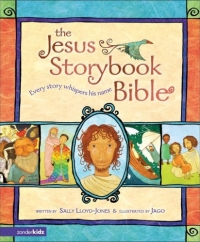 –continuing from part 2.
–continuing from part 2.
Justification for “Spiritualizing” the Land Promise
Whenever one starts talking of “spiritualizing” a text, various wrong-headed assumptions abound. Dispensationalists often use this charge to show our disregard for the Biblical text. And sometimes, any honest effort to show metaphorical language in Scripture is met with suspicion — oh so you are spiritualizing, huh? Now many act as if it is obvious that spiritualizing a text is clearly not acceptable. But what Scripture teaches us this? In fact, is Jesus spiritualizing the Bible, when he claims that the serpent raised by Moses in the wilderness, pointed to Him? Or Paul, when he claims that the Rock in the wilderness wanderings, was Jesus Christ?
Scripture and the Scriptural authors often make clear that they are finding fuller meaning in Old Testament events and pictures. In years gone by, this aspect of Scripture was widely understood and various types and anti-types were common knowledge. But even beyond the places where Scripture points us to a typological understanding, many Christians recognize that some kind of analogical or typological [or more simply, a spiritual] meaning is warranted. I hold that all of Scripture points to and finds its ultimate meaning in Christ. God as the Architect of and sovereign over all history, can work events such that they foreshadow and typify spiritual realities He will later reveal or make clear. Scripture is thick with this, and we can expect that this is how God operates. Granted we do not have liberty to spiritualize and allegoracalize wherever we see fit. We must be guided in this by Scripture.
In the case at hand, I bring forth four reasons why we should view the land promise as pointing to a spiritual reality.
1) God’s purposeful placing of Israel
In Ezekiel 5 we read:
Thus says the Lord GOD: This is Jerusalem. I have set her in the center of the nations, with countries all around her. (Ezekiel 5:5)
This shows us that the very placing of the land of Israel was intentional, by God. It was not just a plot of land, that God liked, but it was chosen to be central to the known world of the day. This strongly hints that the land had a purpose beyond merely being a home for his people. Rather it was to make Israel a city on a hill, and let it testify of God’s might to the nations all around. So there are aspects of the land which have spiritual and other meanings, beyond mere national turf.
2) The connection between the NT Church and the OT Temple
The NT often presents God’s people (the Church) as a figurative Temple.
Do you not know that you are God’s temple and that God’s Spirit dwells in you? …God’s temple is holy, and you are that temple. (1 Cor. 3:16-17)
…we are the temple of the living God; as God said, “I will make my dwelling among them and walk among them, and I will be their God, and they shall be my people.” (2 Cor. 6:16b)
So then you are no longer strangers and aliens, but you are fellow citizens with the saints and members of the household of God, built on the foundation of the apostles and prophets, Christ Jesus himself being the cornerstone, in whom the whole structure, being joined together, grows into a holy temple in the Lord. In him you also are being built together into a dwelling place for God by the Spirit. (Eph. 2:19-22)
In the second passage above, it is interesting to observe that the very promise that God would dwell with His people and be their God is not merely for Abraham and Israel. It is not something only ultimately fulfilled in the time Revelation 21 describes. Rather, it is true now, and for God’s people, the Church. And more, God’s dwelling in His Church today is a fulfillment of those promises quoted in 2 Cor. 6:16 (quoted from Old Testament passages such as Gen. 17:7-8, Ex. 29:45, Lev. 26:12, and Ezek. 37:27).
3) The NT interpretation of the OT Jewish restoration promises
Now the Dispensationalists make much of the many promises in the Old Testament that God would restore Israel, and rebuild the Temple. Since this has not happened yet, they argue, these promises point to a future fulfillment. I won’t discount any future aspect to these promises, but I would like to look closely on how a key promise is interpreted and understood by James, the brother of Jesus and leader of the church at Jerusalem.
Here is the passage in Amos:
“In that day I will raise up the booth of David that is fallen and repair its breaches, and raise up its ruins and rebuild it as in the days of old, that they may possess the remnant of Edom and all the nations who are called by my name,” declares the LORD who does this…. “I will restore the fortunes of my people Israel, and they shall rebuild the ruined cities and inhabit them; they shall plant vineyards and drink their wine, and they shall make gardens and eat their fruit. I will plant them on their land, and they shall never again be uprooted out of the land that I have given them,” says the LORD your God. (Amos 9:11-12, 14-15)
It is pretty obvious that this passage is referring to the restoration of Israel in their land. They are going to be planted on their land, never to be uprooted again. However, see how James understands and applies this passage. James is speaking in the verses below:
Simeon has related how God first visited the Gentiles, to take from them a people for his name. And with this the words of the prophets agree, just as it is written, “After this I will return, and I will rebuild the tent of David that has fallen; I will rebuild its ruins, and I will restore it, that the remnant of mankind may seek the Lord, and all the Gentiles who are called by my name, says the Lord, who makes these things known from of old.” Therefore my judgment is that we should not trouble those of the Gentiles who turn to God…. (Acts 15:14-19)
James was not looking for some future fulfillment of this passage. He saw it being fulfilled now. The growth of the Church was the fulfillment of the rebuilding of the fallen tent of David. Gentiles were turning to God, even as the Church was rising in prominence.
This passage should be important to us as we seek to interpret other restoration passages in the Old Testament. The New Testament has provided a model for how to interpret them. The Church is the new Temple. According to Ephesians 2, the Church and Israel together are “one new man” (cf. Eph. 2:15), and are being built into a single dwelling place for God (see the above quote from Eph. 2:19-22).
I’ve already gone too long for a single post, so I’ll keep the 4th point for next time. We’ll look at the connection between land and rest, and move on to view the Promised Land in perspective with other earthly realms mentioned in Scripture.
Before I go, I should point you to this link, where you can hear an excellent treatment of this topic by blogger Drake Shelton, in a message entitled “The Blossoming of the Land Promise“. If you listen to that message, some of my thunder will be stolen, but I want you to have the link. It’s an excellent treatment of the totality of Scripture in regards to this topic.
